Tata Nexon EV vs Mahindra XUV400 comparison review - closer than ever
We've been here before last year, but the story hasn't changed all that much in this time. The Tata Nexon EV and Mahindra XUV400 continue to be the two most viable options for you if you are in the market for an electric family car. But in this time the Tata Nexon EV has undergone quite a transformation with this new update. Enough for us to come back and see how it stacks up against its closest rival, the Mahindra XUV400, which in this new Pro form is also packing quite a bit more.
Tata Nexon EV vs Mahindra XUV400 styling, dimensions
When we last drove these two EVs, we came away quite impressed by the presence of the Mahindra XUV400. That remains as it was. The Mahindra is a size larger than the Tata, and it does seem to count. Its flatter, blocky look gives you the presence you might want when you choose an SUV. The snazzy copper highlights also bring more attention to the XUV400, although some might find them a bit much.

While we think LED lighting should have been offered at this price, the plug motifs in the rear lighting are a neat touch. The XUV400 is also the more practical car, it has 200mm of ground clearance against the Nexon EV's 190mm. The Mahindra's longer length adds to boot space as well, giving you 378 litres against the Tata's 350 litres, although the Nexon EV does have a lower lip. Unlike many EVs, both give you a spare wheel.
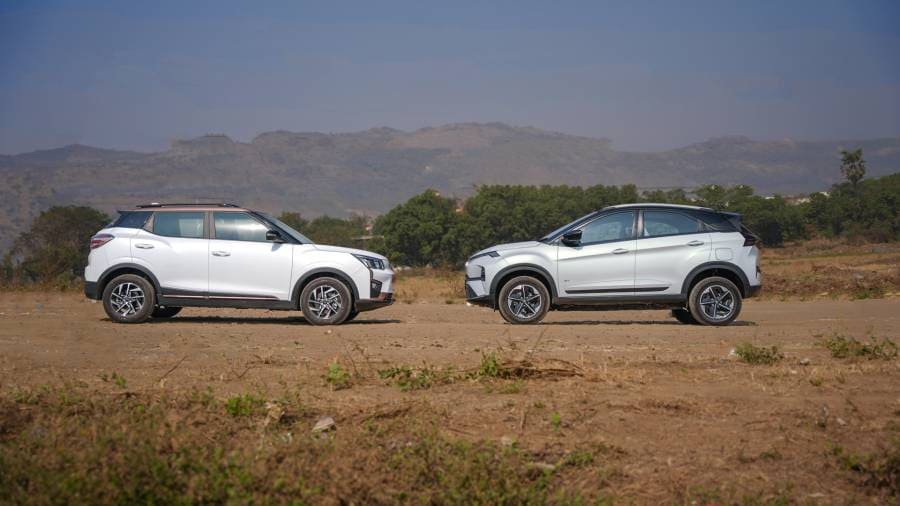

That said, it's the Tata Nexon EV that catches your eye first. This pearl-finish Empowered Oxide shade makes this EV look pricey and unique. But it's more than just a regular facelift, with a new bonnet and front fenders fitting in with the much sharper front. The full-width lighting(also functional as a charging indicator) makes these new Tata cars instantly recognisable and is well-tempered by the fairly discreet lighting. These may look small in their deep angular recesses but are quite effective. Specific to the Nexon EV are the chrome strakes in the air dam which are a good foil to the body-coloured surfaces.
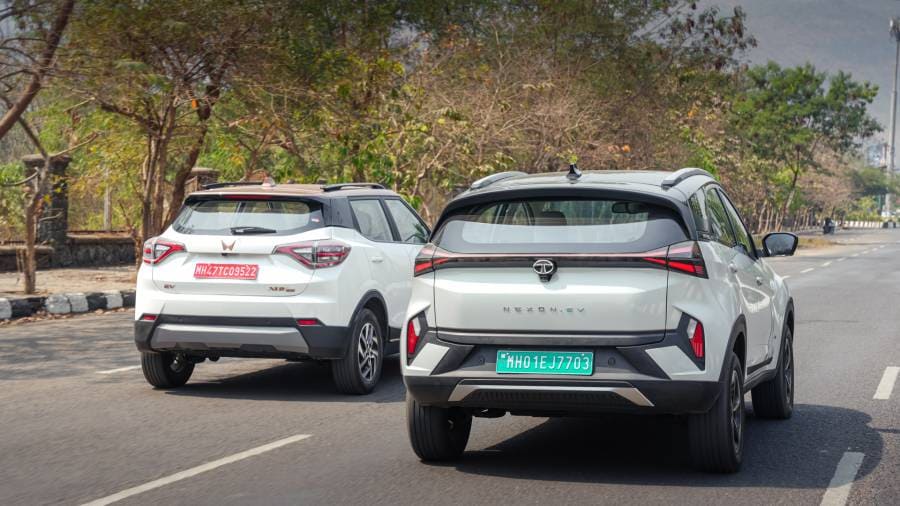
To Tata's credit, these extensive changes seem to gel well with the existing bodywork. The rear is again notably refreshed with the full-width lighting carrying on with the sharp theme of the front. There are some changes to the bumper too that match the front, the vertical reflectors being the most noticeable.
Tata Nexon EV vs Mahindra XUV400 interiors, space, practicality, tech
Compared to the last time we brought these two EVs together, they now have more inviting cabins. Both get contemporary dash faces, more gloss black, new steering wheels and revised centre consoles. But the difference comes in the execution.
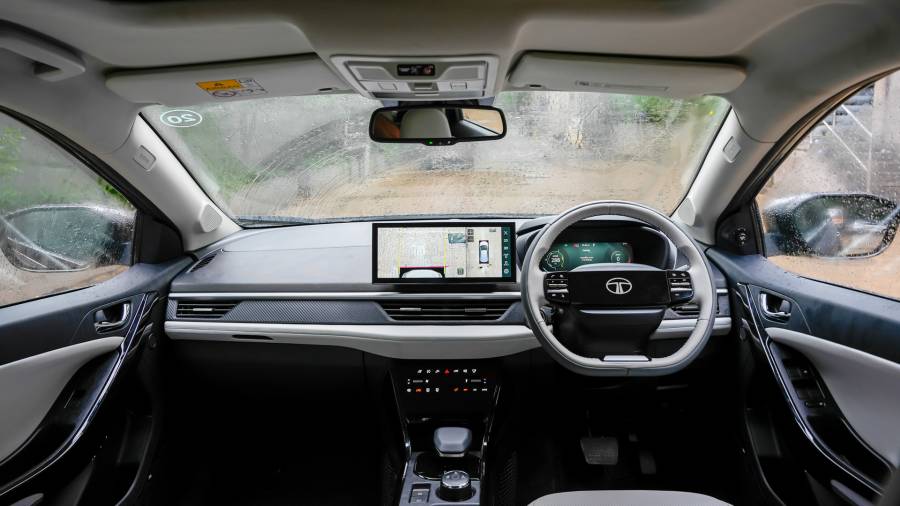
In keeping with the quite clean exterior, there's a minimal grey and white aesthetic to the cabin of the Tata Nexon EV. The textured carbon fibre look and crisp angular design for the air vents being effective new additions. There is a more modern vibe to the space with the two-spoke steering and capacitive touch panels for the climate controls. But there is a price to pay in terms of ease of use.
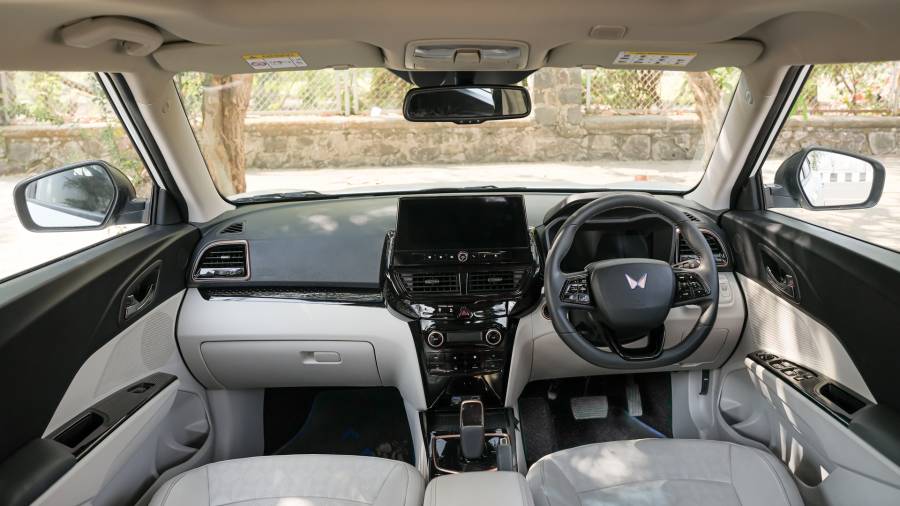
The Mahindra XUV400 on the other hand feels more traditional with its greater use of beige. A sense that continues with the more rounded surfaces while the steering wheel, which feels almost as nice to hold as the Nexon EV, gets more traditional buttons that are easier to use on the move. The same is to be said of the new centre console. You have larger, physical buttons for most functions that make life much easier. The Mahindra also has a slight edge in terms of fit and finish. There are fewer rough edges and it generally feels better put together. A highlight in both is the rich leatherette upholstery and contrast stitching.
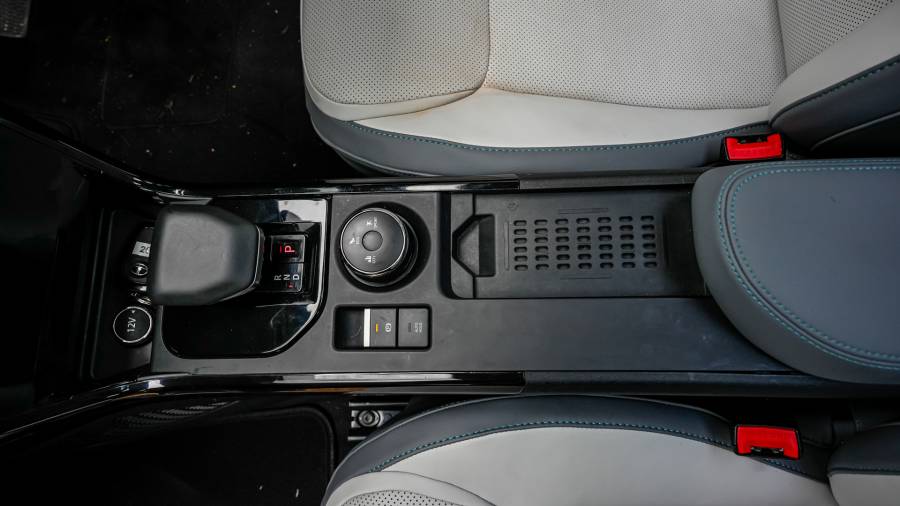
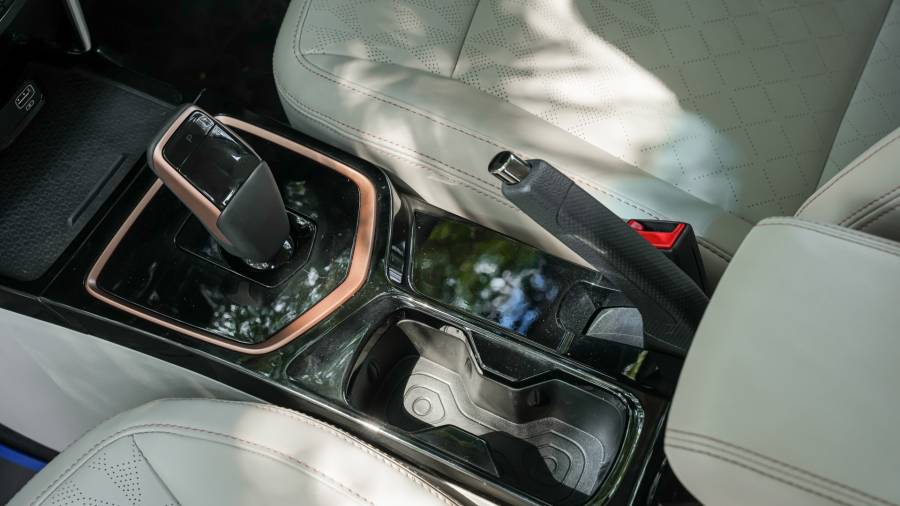
The XUV400 is more practical on the inside too. The Nexon EV's central tunnel has been reworked, and the new gear selector and switches here feel nicer to use but you still don't get cupholders. The wireless charger is also more logically placed in the Mahindra while there are deeper storage bins here too. The Nexon EV has a large glove box but the Mahindra holds more things more securely in its doors. The Nexon EV's 45W Type C charging is a handy bonus over the much slower Type A chargers in the XUV400.
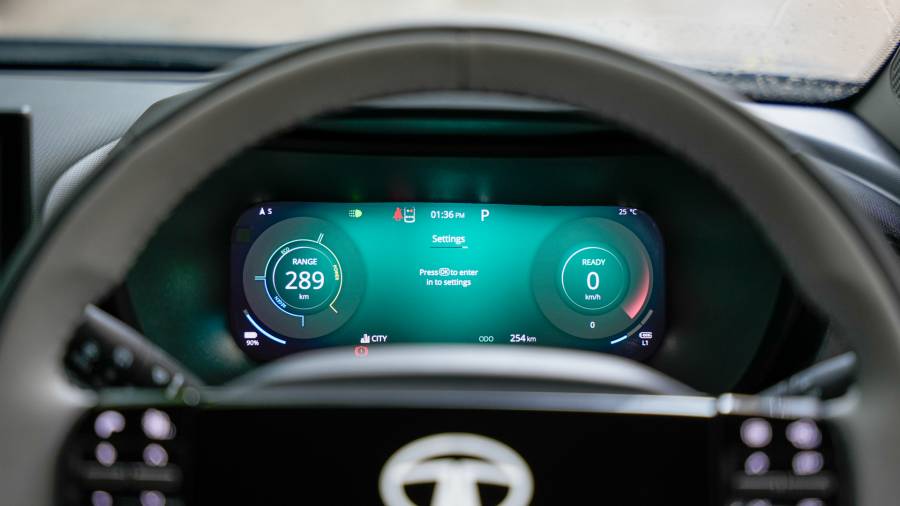
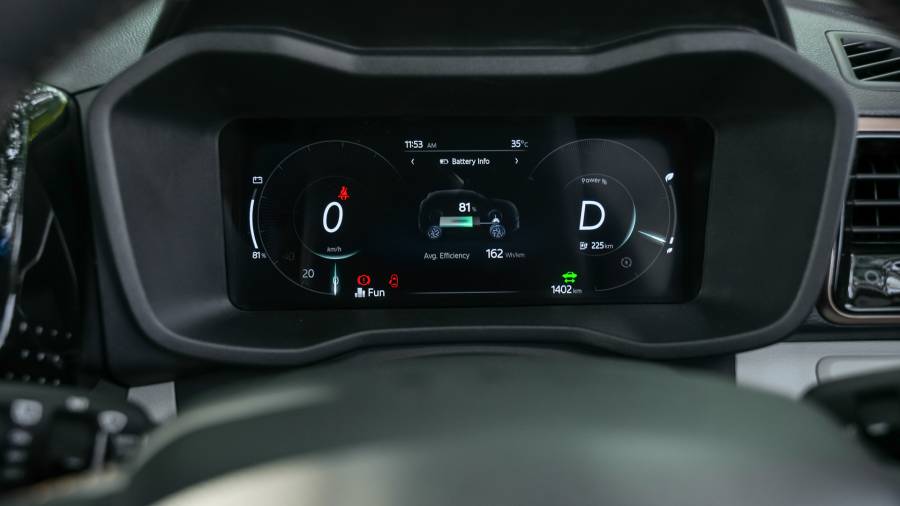
But with this update, Tata now has a notable advantage over Mahindra on the tech front, a key consideration among the quite aware buyers of these EVs. Both now get 10.25-inch driver displays but it's the one in the Tata that is easier to use. The colours are more vibrant and it is more logically laid out, although both could do with larger fonts for key information. The XUV400 also get a neat navigation display here but the Nexon EV goes further by projecting Google Maps from your phone pairing here directly.
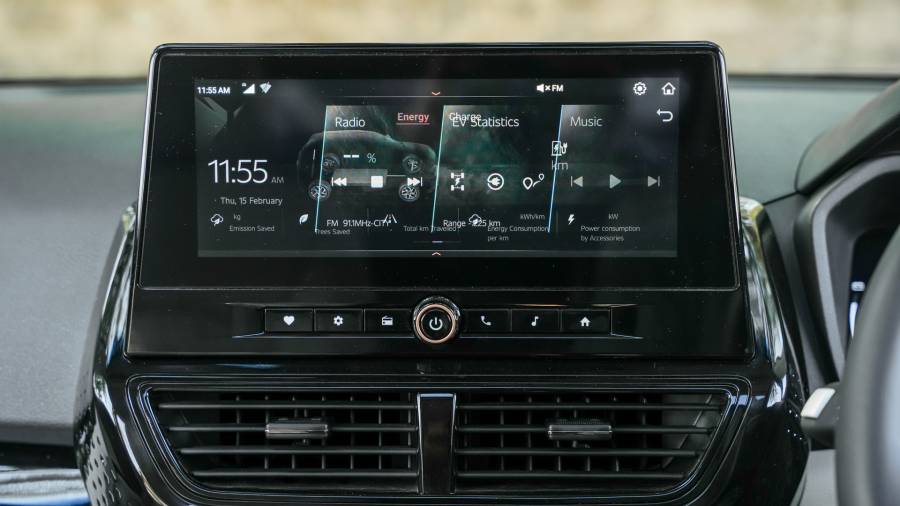
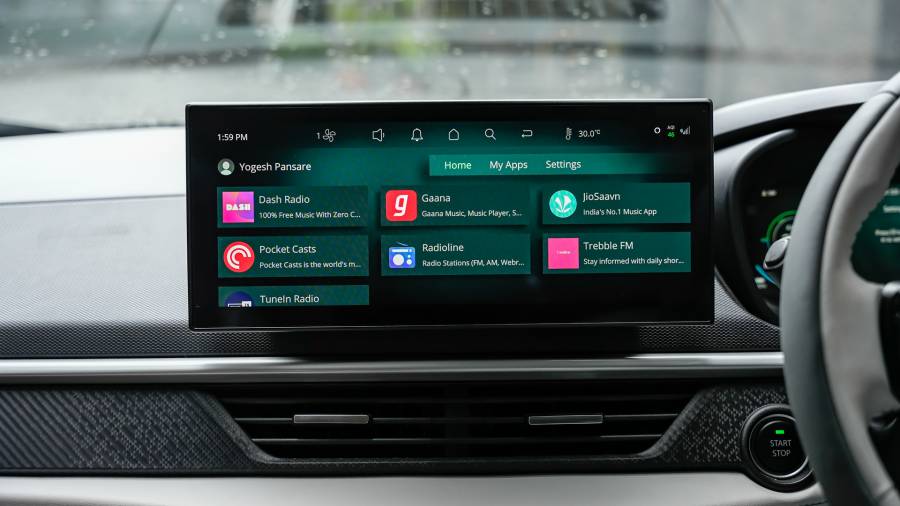
The Nexon EV's advantage continues with the main central touchscreen, larger at 12.3 inches compared to the also new 10.25-inch one in the XUV400. Aside from the larger size and both employing modern widget-based home screens, the Tata screen is again the easier one to use with its sharper touch response and more intuitive sub-menus. You also get quite a bit more connectivity like the Arcade.ev suite of streaming apps. Both also give you Alexa integration as well as wireless Android Auto/ Apple Carplay.
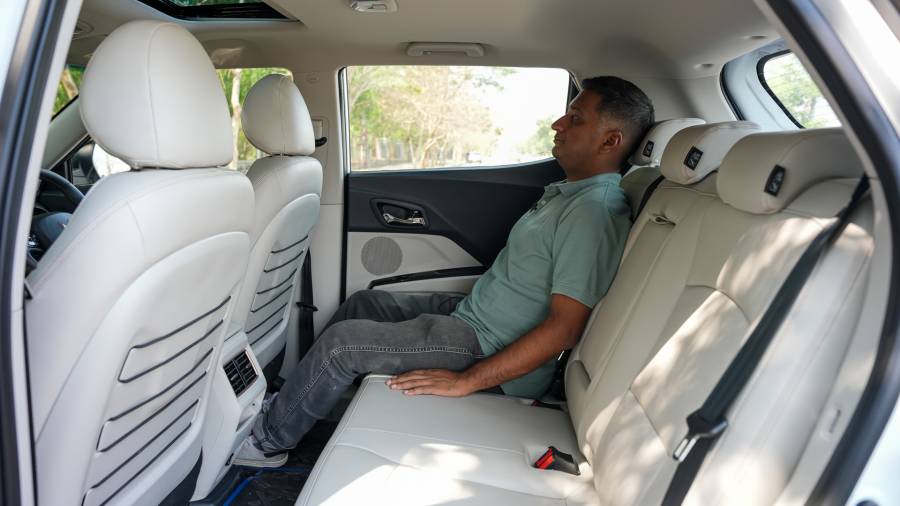
The XUV400 has further enhanced its strengths in the back seat with this update. Its larger size shows the most benefits here, where three abreast is easily possible, unlike the tight squeeze that this is in the Nexon EV. But the 102mm wheelbase advantage fully shows in the much more generous knee room although you have good footroom in both by tucking your feet under the front seats. The new lighter upholstery helps further the Mahindra's case.
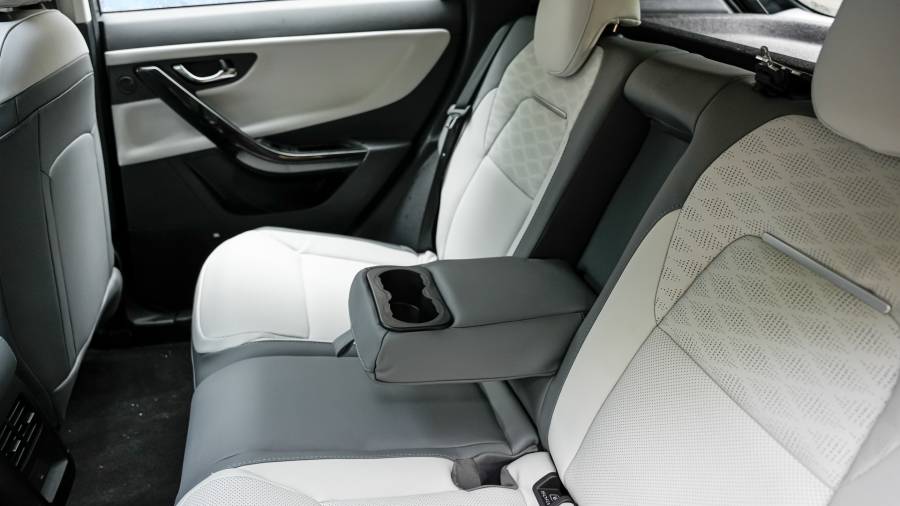
The seats in the Nexon EV have been slightly reprofiled to free up more legroom but this has come at the cost of some thigh support. Considering the floor in the XUV400 isn't too high for an EV, unlike the Tata, this holds back the Nexon EV a touch more in this regard than earlier. The Tata though has a more contoured backrest which some might like. In terms of amenities, the XUV400 has caught up with the Nexon here, now coming with type-C charging and rear AC vents.
Tata Nexon EV vs Mahindra XUV400 features and safety
Both SUVs here will give you auto headlamps and wipers, wireless charging, a single pane, sunroof, 60:40 split back seats and connected tech. The Mahindra will give you dual-zone climate control but the Nexon EV has quite an edge with ventilated seats, 9=seapeker JBL audio with sound modes, PM 2.5 air purifier, full LED lighting and a new-age V2V, V2L charging function.
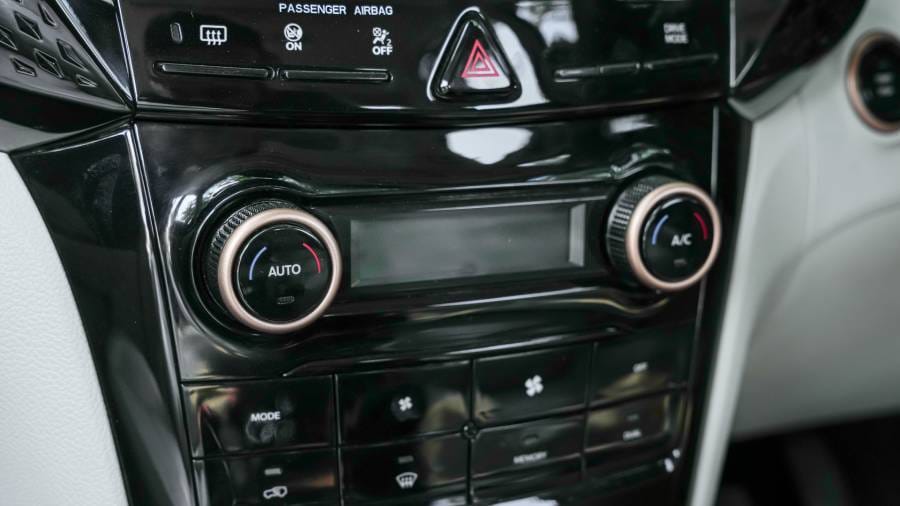

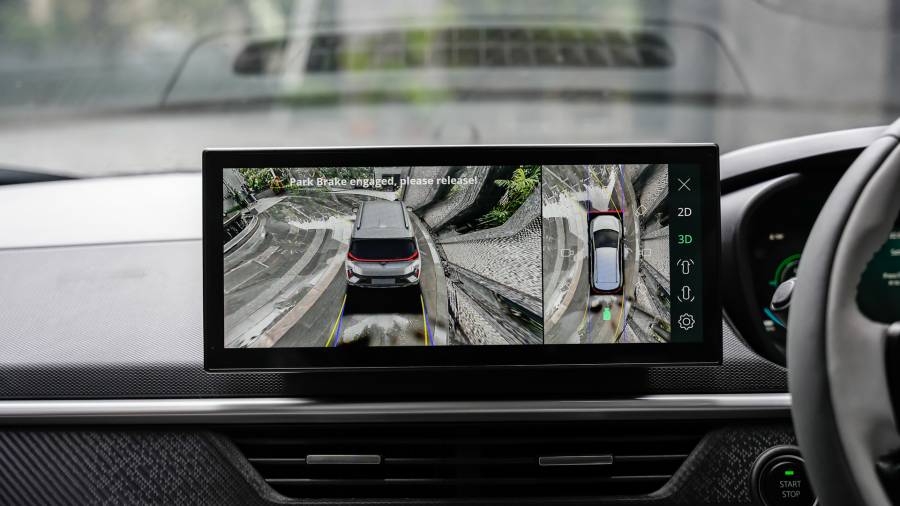
Even though both get six airbags, ESC, rear disc brakes, TPMS and hill-hold, the Nexon EV goes further with hill-descent control and a neat 360-degree camera setup with blind view monitors. Having said that, the XUV400 stopped at a shorter distance in our braking test by just over 2m and also felt more confident doing it.
Tata Nexon EV vs Mahindra XUV400 real-world range, battery, charging
Not much has changed mechanically in terms of the batteries with both cars. So the Nexon EV continues with its 40.5 kWh LFP pack and the XUV400 with its 39.5 kWH Ni-MH chemistry. That said, the Nexon EV is now 2 per cent more aerodynamically efficient with the design changes and it also carries a more efficient cooling system, aside from the significance of a new motor altogether.
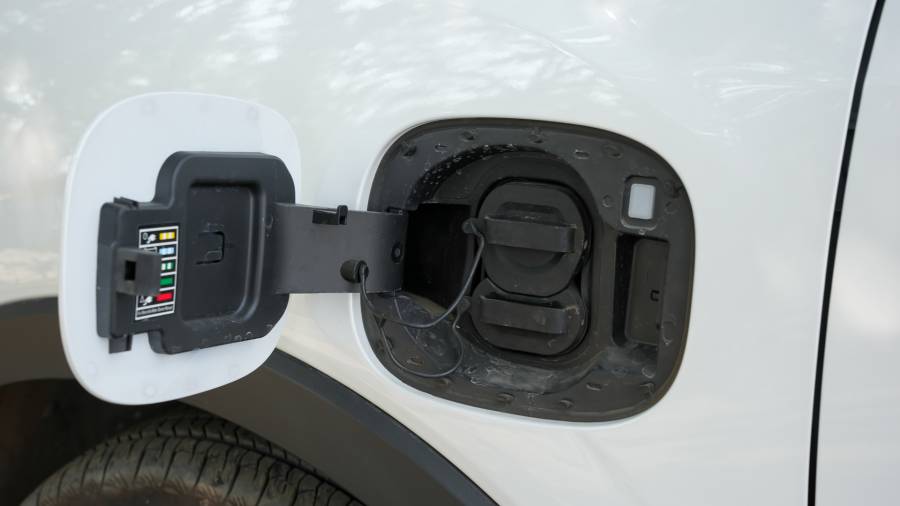
This has led to it gaining a notable edge over the XUV400 in the real-world range from the last time we tested these two EVs, despite the ARAI range number being not too different. So the Tata will now give you 298 km of overall range in the real world, against 267 km in the Mahindra. This difference remains largely consistent in both city and highway driving situations(see below for details). The Tata's paddle-operated regen modes as well as the Eco mode help squeeze out more miles, and the cooling advantages have let it now match the effect of the L single-pedal mode in the Mahindra.
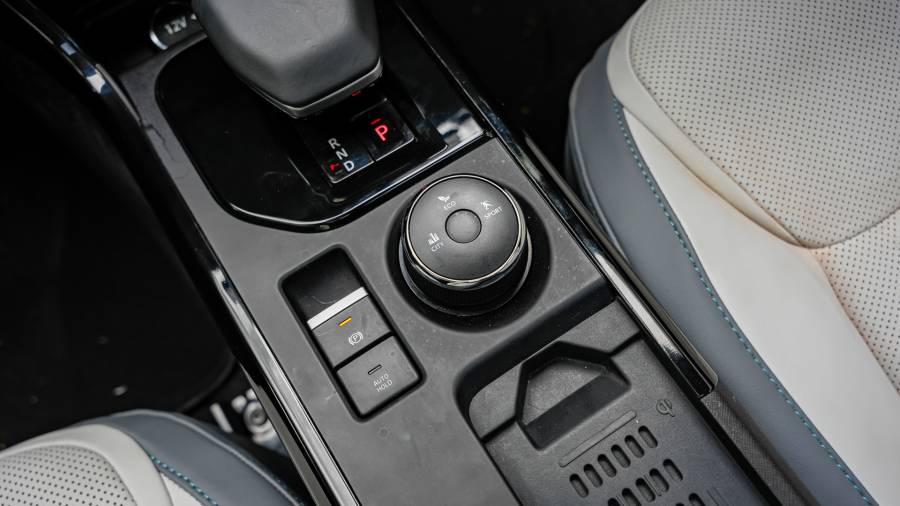
For this test, we drove the Nexon EV in its Eco mode at level 2 regen and in the calmest Fast mode for the XUV400. Although, another hindrance for the Mahindra is the 90 kmph speed limit in this mode, which meant we had to often switch modes on the highway to get it closer to our testing speed, further depleting energy.
There's not much to choose between the two EVs in terms of charging speeds. Both can DC fast charge at up to 50 kW. The XUV400 is slightly quicker to get from 10 to 80 per cent in 50 minutes, while the Nexon EV takes 56 minutes. The Mahindra is also quicker to charge via a 3.3 kW AC home charger, taking 13.5 hours against the Tata's 15 hours. But the Tata is quicker with the 7.2 kW that comes as standard with these top-spec models, taking 6 hours against the Mahindra 6.5s.
Tata Nexon EV vs Mahindra XUV400 driving impressions
Both the SUVs here are quite easy to navigate in tight traffic. The Nexon EV's more compact footprint, larger mirrors and full camera systems are useful but the XUV400 is inherently easy to place too. You have a clearer view out and the blindspots around the A-pillars are nowhere near as intrusive as in the Tata. The Mahindra also has a more comfortable driving position, the steering angle in the Tata is not exactly comfortable for all body types.
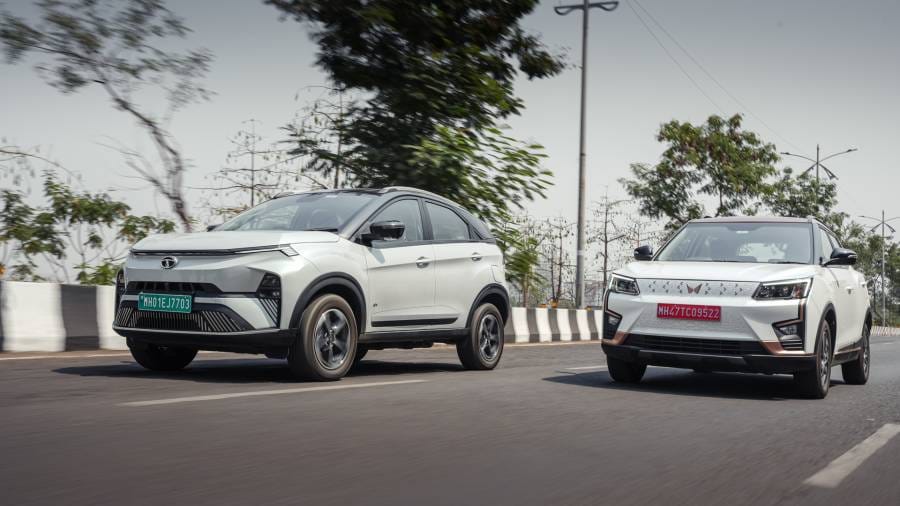
With 150PS and 310 Nm, the Mahindra XUV400 still has about as much performance as you can get for this much money. The Tata Nexon EV, despite the new motor that it gets, is still some way behind on paper with 145PS and 215 Nm. But in the real world, there's not much to choose between the two, as our 0 to 100 kmph times and rolling acceleration numbers show.
Much of this is down to the fact that the Mahindra is still a fairly lairy experience. Yes, the ESC has cut down on this EV's earlier traction problems but it still can't fully quell wheelspin under hard acceleration, especially when the road surface isn't perfect. The XUV400 also tends to torque-steer at these times.

The Nexon EV delivers power in a softer, smoother manner that's not as exciting but is similarly effective. Power builds in a predictable swell even in the sportier modes that makes using these in daily driving viable. It's also more refined in terms of its throttle response and the way it flows from deploying power to recuperation. In any case, the Eco mode doesn't limit performance so is usable across driving scenarios, only dulling responses. The regen modes in the Nexon EV are also well-judged. At level 2, it feels the closest to the engine braking effect in an ICE car. The L mode in the Mahindra is still the closest we've seen a mainstream EV get to single-pedal driving, which can make life easier once you get the hang of it. In its highest regen level, the Tata slows right down to a 6 kmph crawl which is a more traditional feeling.
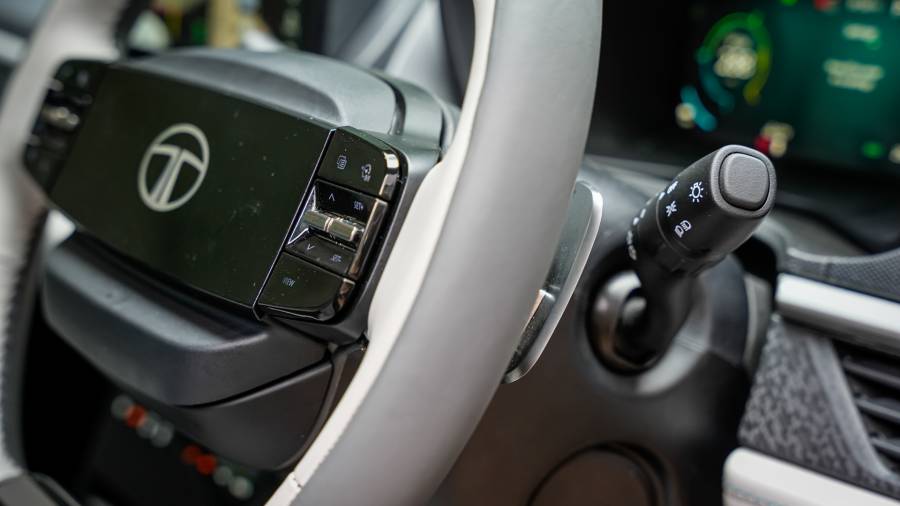
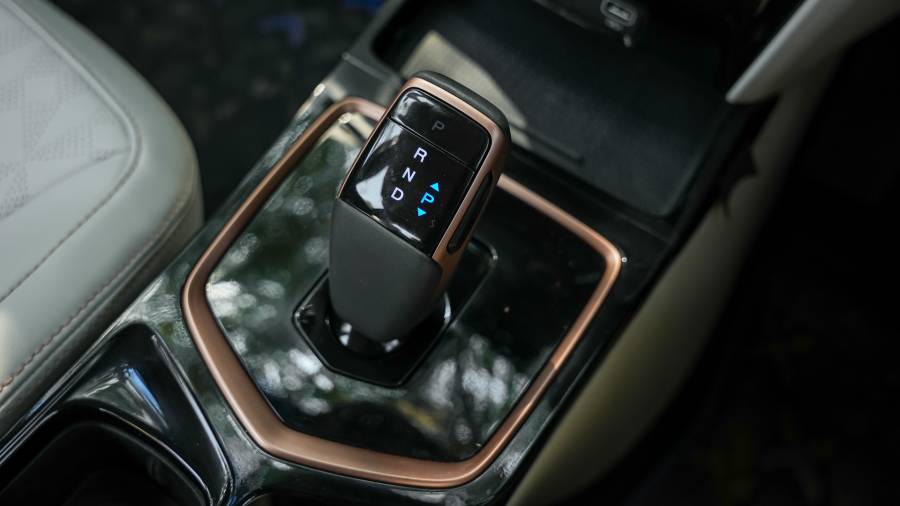
As we mentioned, the Mahindra limits speed in the lowest Fast mode that gets in the way of highway driving. That being said, the XUV400 is the one with the wider breadth of performance in the higher modes. The Nexon EV tends to taper off after 80 kmph, while the Mahindra still feels energetic at triple-digit speeds.
Aiding the XUV400's easy visibility is its twirly steering. There's not much precision here and it doesn't get heftier as speed increases which takes away some confidence but you have a car that's easy to manoeuvre in the city. In this regard, the Nexon EV has seen a noticeable improvement. It's much less cumbersome than before and is more precise than in the Mahindra, which makes for an overall more predictable driving experience.
It also holds the Nexon EV in good stead around bends. Body movements continue to be fluid and predictable which makes it some degree of fun too. It also continues to be quite stable at high speeds for a sub-four-metre SUV so long-distance driving is not too tiring. The XUV400, conversely, is best driven with a degree of restraint. It rolls quite a bit, despite the low-placed weight and this continues with some vertical movements at higher speeds.
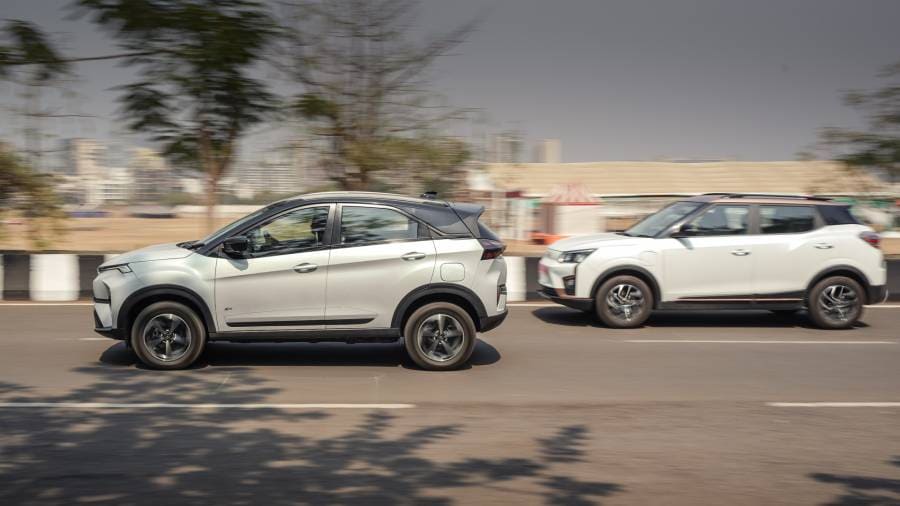
But the flipside to this is ride comfort that's quite rare for an EV. The Mahindra takes rough surfaces confidently, there's a soft edge to the ride that makes sure very little filters into the cabin and even if it does it isn't too uncomfortable. The Tata's sharper handling has come at a slight cost in this regard. It's still firm over broken roads and other obstructions but smoothes out as speeds rise. So at higher speeds, there's a similar degree of comfort as the Mahindra. These traits are enhanced by the tyre profiles that both use for their 16-inch wheels.
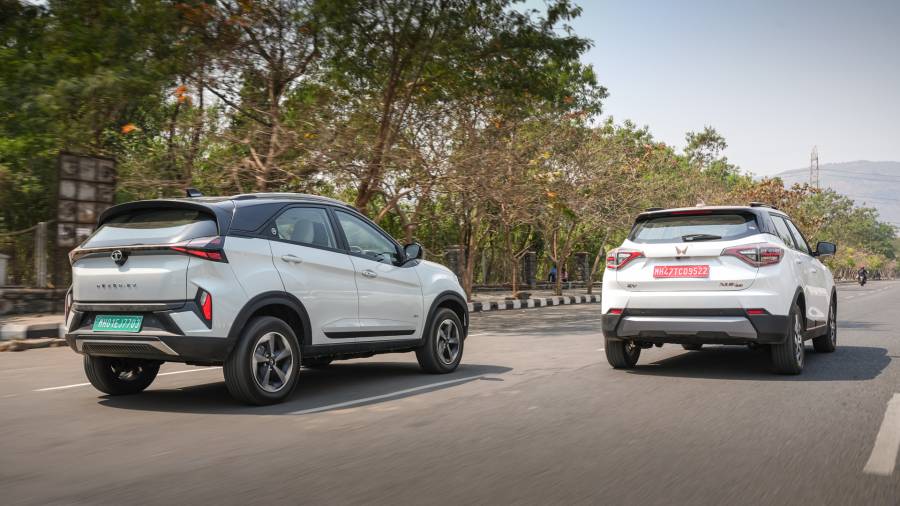
Tata Nexon EV vs Mahindra XUV400 price, verdict
Priced at Rs 18.78 lakh, the Mahindra XUV400's biggest draw is its price given the Tata Nexon EV costs Rs 20.45 lakh. This makes it great value, helped by the purposeful enhancements that have been made inside the cabin. This bolsters its inherent strengths of comfort and space. It's now closer than ever between these two, the Tata Nexon EV staying ahead by way of its superior efficiency, its more modern tech and better driving characteristics.
Tata Nexon EV vs Mahindra XUV400 performance, 0 to 100 kmph, real-world range
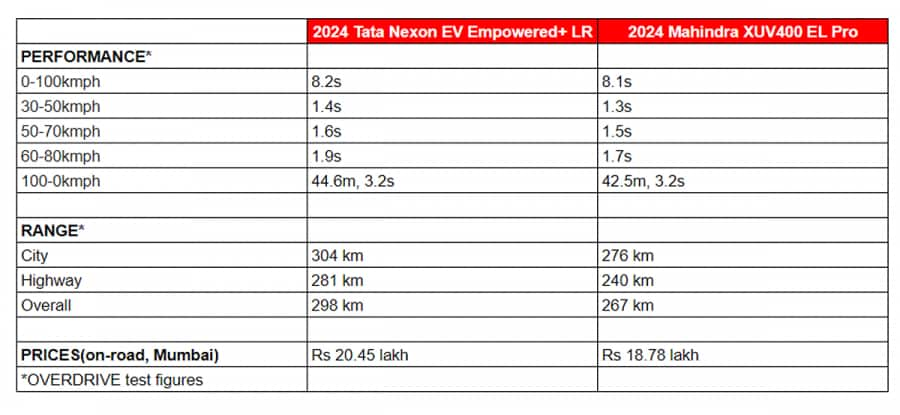
Tata Nexon EV vs Mahindra XUV400 scorecard
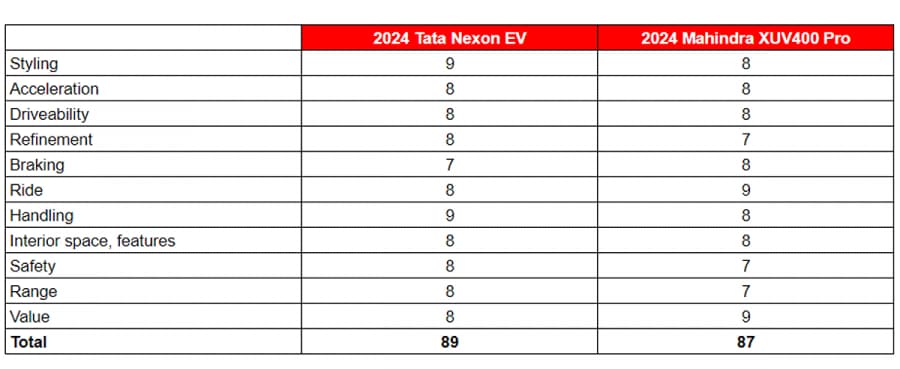
Also Read:
Tata Nexon EV facelift vs Mahindra XUV400 vs MG ZS EV: Price comparison
Tata Nexon EV vs Mahindra XUV400 Pro: Real-World Range Compared
Mahindra XUV400 vs Tata Nexon EV Max comparison review
Starts Rs 13.99 Lakhs
-NA-
Automatic
129
245
-NA-
Starts Rs 6.95 Lakhs
1497cc
Automatic
110
260
21.5 Kmpl
Starts Rs 7.95 Lakhs
1497cc
Automatic
110.1
300
-NA-
Starts Rs 22 Lakhs
-NA-
Automatic
176.75
280
-NA-
Starts Rs 17.74 Lakhs
-NA-
Automatic
143
250
437 Kmpl














